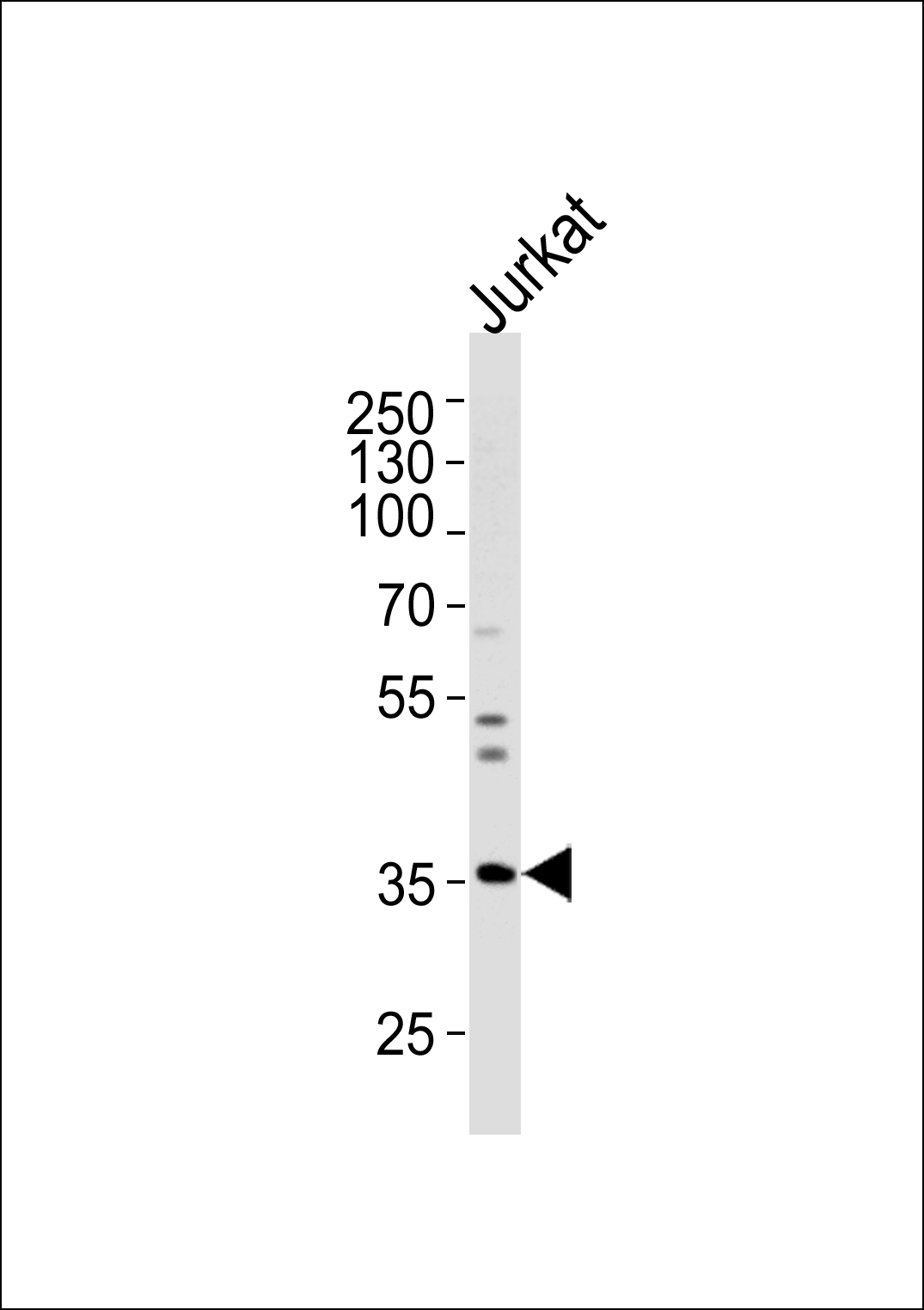GLRB Antibody (N-term)
Affinity Purified Rabbit Polyclonal Antibody (Pab)
- 产品详情
- 实验流程
- 背景知识
Application
| WB, E |
|---|---|
| Primary Accession | P48167 |
| Other Accession | P20781, P48168, Q9GJS9, NP_001159532.1, NP_000815.1 |
| Reactivity | Human |
| Predicted | Bovine, Rat |
| Host | Rabbit |
| Clonality | Polyclonal |
| Isotype | Rabbit IgG |
| Calculated MW | 56122 Da |
| Antigen Region | 103-132 aa |
| Gene ID | 2743 |
|---|---|
| Other Names | Glycine receptor subunit beta, Glycine receptor 58 kDa subunit, GLRB |
| Target/Specificity | This GLRB antibody is generated from rabbits immunized with a KLH conjugated synthetic peptide between 103-132 amino acids from the N-terminal region of human GLRB. |
| Dilution | WB~~1:1000 E~~Use at an assay dependent concentration. |
| Format | Purified polyclonal antibody supplied in PBS with 0.09% (W/V) sodium azide. This antibody is purified through a protein A column, followed by peptide affinity purification. |
| Storage | Maintain refrigerated at 2-8°C for up to 2 weeks. For long term storage store at -20°C in small aliquots to prevent freeze-thaw cycles. |
| Precautions | GLRB Antibody (N-term) is for research use only and not for use in diagnostic or therapeutic procedures. |
| Name | GLRB |
|---|---|
| Function | Subunit of heteromeric glycine-gated chloride channels (PubMed:11929858, PubMed:15302677, PubMed:16144831, PubMed:22715885, PubMed:23238346, PubMed:25445488, PubMed:34473954, PubMed:8717357). Plays an important role in the down-regulation of neuronal excitability (PubMed:11929858, PubMed:23238346). Contributes to the generation of inhibitory postsynaptic currents (PubMed:25445488). |
| Cellular Location | Postsynaptic cell membrane {ECO:0000250|UniProtKB:P48168}; Multi-pass membrane protein {ECO:0000250|UniProtKB:P23415}. Synapse {ECO:0000250|UniProtKB:P48168} Cell projection, dendrite {ECO:0000250|UniProtKB:P48168}. Cell membrane; Multi-pass membrane protein {ECO:0000250|UniProtKB:P23415}. Cytoplasm. Note=Retained in the cytoplasm upon heterologous expression by itself. Coexpression with GPHN promotes expression at the cell membrane (PubMed:12684523). Coexpression with GLRA1, GLRA2 or GLRA3 promotes expression at the cell membrane {ECO:0000250|UniProtKB:P20781, ECO:0000269|PubMed:12684523} |
For Research Use Only. Not For Use In Diagnostic Procedures.
Provided below are standard protocols that you may find useful for product applications.
BACKGROUND
This gene encodes the beta subunit of the glycine receptor, which is a pentamer composed of alpha and beta subunits. The receptor functions as a neurotransmitter-gated ion channel, which produces hyperpolarization via increased chloride conductance due to the binding of glycine to the receptor. Mutations in this gene cause startle disease, also known as hereditary hyperekplexia or congenital stiff-person syndrome, a disease characterized by muscular rigidity. Alternative splicing results in multiple transcript variants.
REFERENCES
Joslyn, G., et al. Alcohol. Clin. Exp. Res. 34(5):800-812(2010)
Wheeler, H.E., et al. PLoS Genet. 5 (10), E1000685 (2009) :
Ziegler, E., et al. Naunyn Schmiedebergs Arch. Pharmacol. 380(4):277-291(2009)
Tabakoff, B., et al. BMC Biol. 7, 70 (2009) :
Ahrens, J., et al. Pharmacology 83(4):217-222(2009)
终于等到您。ABCEPTA(百远生物)抗体产品。
点击下方“我要评价 ”按钮提交您的反馈信息,您的反馈和评价是我们最宝贵的财富之一,
我们将在1-3个工作日内处理您的反馈信息。
如有疑问,联系:0512-88856768 tech-china@abcepta.com.























 癌症的基本特征包括细胞增殖、血管生成、迁移、凋亡逃避机制和细胞永生等。找到癌症发生过程中这些通路的关键标记物和对应的抗体用于检测至关重要。
癌症的基本特征包括细胞增殖、血管生成、迁移、凋亡逃避机制和细胞永生等。找到癌症发生过程中这些通路的关键标记物和对应的抗体用于检测至关重要。 为您推荐一个泛素化位点预测神器——泛素化分析工具,可以为您的蛋白的泛素化位点作出预测和评分。
为您推荐一个泛素化位点预测神器——泛素化分析工具,可以为您的蛋白的泛素化位点作出预测和评分。 细胞自噬受体图形绘图工具为你的蛋白的细胞受体结合位点作出预测和评分,识别结合到自噬通路中的蛋白是非常重要的,便于让我们理解自噬在正常生理、病理过程中的作用,如发育、细胞分化、神经退化性疾病、压力条件下、感染和癌症。
细胞自噬受体图形绘图工具为你的蛋白的细胞受体结合位点作出预测和评分,识别结合到自噬通路中的蛋白是非常重要的,便于让我们理解自噬在正常生理、病理过程中的作用,如发育、细胞分化、神经退化性疾病、压力条件下、感染和癌症。






